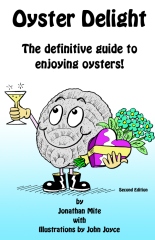 |
 Better Birding
Better Birding
Tips, Tools & Concepts for the Field
By George L. Armistead & Brian L Sullivan
Princeton University Press, Softcover, $29.95 £19.95 320 pages, 7 ½ x 9 ½ , 850 color photos, 4 maps, ISBN 978-0-691-12966-2, Publication date: 13 January 2016. eBook ISBN: 978-1-400-87416-3
Better Birding is a different guide to birding. It seeks to inform the reader about more than the bird’s plumage and appearance. It teaches us to look at the bird in context of its environment or habitat, behaviour in that environment, taxonomy, and natural history. It provides a wide angle look at the bird’s habits so that one is more likely to encounter and actually know a species. It is an immensely valuable contextual resource.
When we’re out sailing, we become very much aware of the wildlife around us. Eventually we become curious about that wildlife, wanting to know more about it so it becomes a bigger part of our experience. Just seeing it is not enough. Understanding it in its environment becomes of great interest.
Better Birding covers birds in North America, specifically the United States and Canada. It is organized by habitat: waterbirds, coastal birds, seabirds, large shorebirds, skulkers, birds of forest and edge, aerial insectivores, night birds and open country birds. The accomplished authors encourage you to not just study the birds but “Be the Bird, See the Bird”. As habitat often dictates behaviour, the authors are helping the reader acquire the expertise to become a better birder by understanding such factors.
Each section introduces the grouping, then launches into in depth coverage of the species within it. Each species discussion begins with a synopsis of breeding habits and lifespan, then provides detailed examination of the behaviour, habitat, taxonomy and other factors that help the reader not only identify the bird but also identify with it. The richly illustrated photos of birds in flight, on land, and on water present not just a visual image of how it looks but also a snapshot of its behaviour within its environment. As behavioural cues are significant in separating species, the simple descriptions matched with images are invaluable in building observational skills.
Better Birding reveals the techniques experts use for quick and easy identification of birds. It simplifies identification strategies by grouping birds by behaviour within specific habitats. With these tools, the amateur birding enthusiast develops a strong foundation for better birding skills, which will inevitably lead to more enjoyment out in the field.
Print Edition |
|
Amazon US |
Amazon UK |
Kindle Edition |
|
Amazon US |
Amazon UK |
|
White Seahorse (Reg. in Ireland, #444071) is a division of Knowledge Clinic Ltd.
Europe: Port Aleria, Rosnakilly, Kilmeena, Westport, Co. Mayo, Ireland - USA: PO Box 726, Mahwah, NJ 07430 All content on this site is subject to Copyright© |











